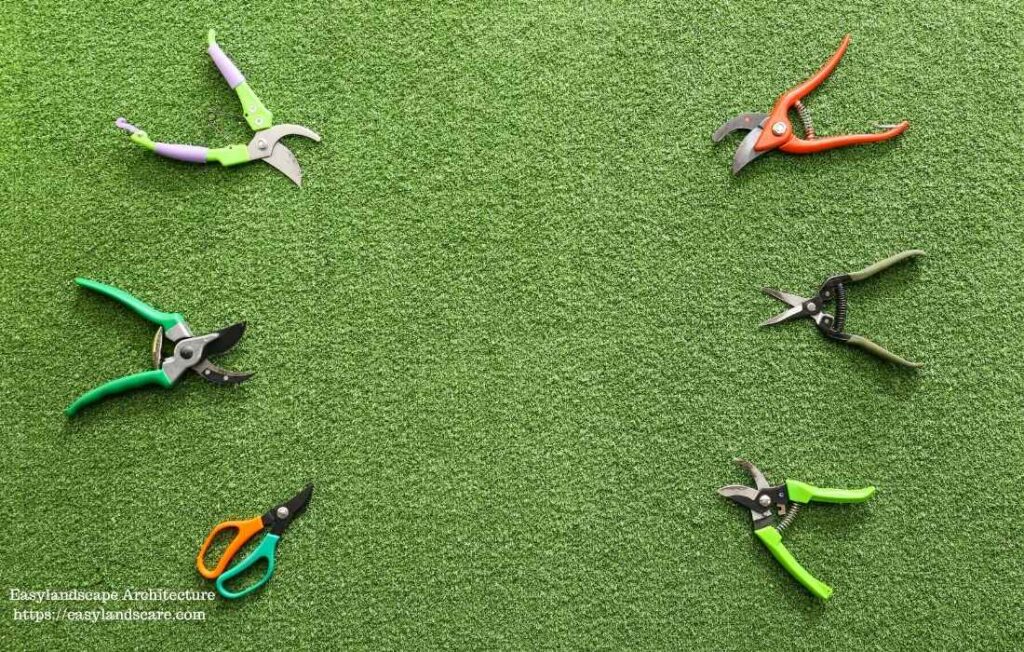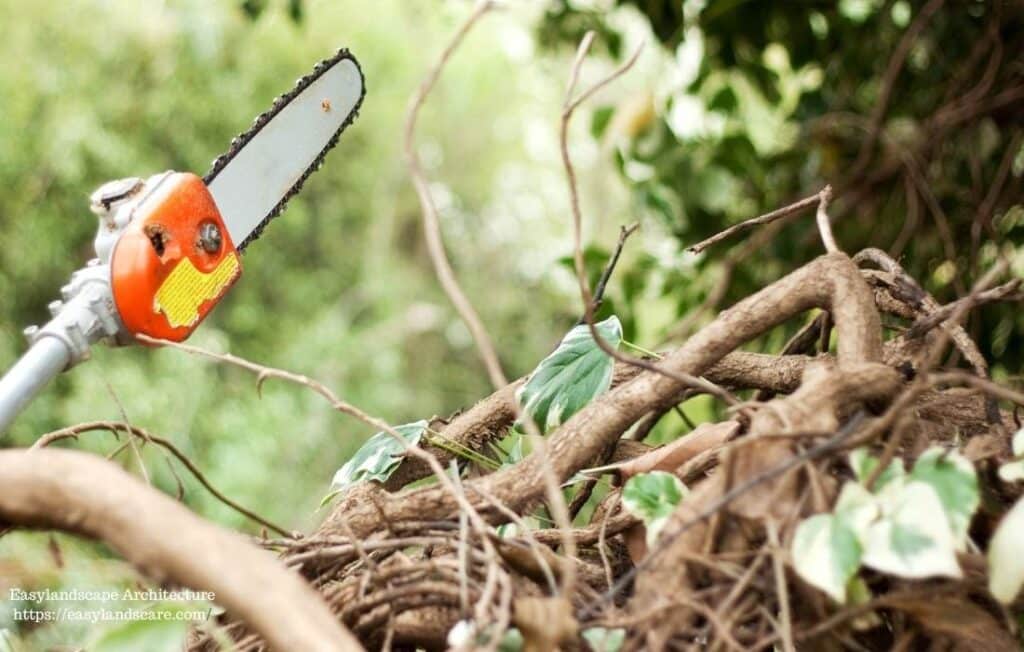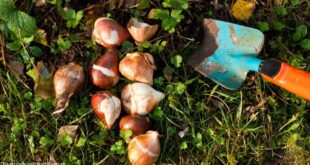Overview
In this article, I will thoroughly explain the tree pruning tools that I frequently use in pruning practices and believe you will find useful.
One of the essentials of a good landscape is pruning applications. Pruning not only creates an attractive appearance for the landscape but is also indispensable for the healthy growth of your plants. Using the right pruning tools is very important to achieve better results. Because choosing the wrong pruning tools can damage your trees and plants, and even cause injury to you. Without further ado, let’s get started.
Why It Is So Important to Use the Right Tree Pruning Tools?
If you want your trees to grow in a healthy way, you must use the right and high-quality pruning tools. Imagine you have fruit trees—if you haven’t done the proper pruning on time, the yield from those trees will be low. Let me explain the reason for this simply:
- The minerals and nutrients that trees absorb from the soil won’t reach the correct branches.
- When the tree grows, it won’t achieve an ideal shape.
- Instead of growing vertically, trees also grow horizontally and won’t benefit from sunlight properly.
- The tree’s vascular system will be damaged, affecting its overall health.
- The risk of personal injury increases.
I could list even more examples, but that’s a topic for another article. If you perform the correct pruning practices with the right tree pruning tools:
- You’ll have healthier trees.
- They will grow better.
- If it’s a fruit tree, the fruit yield will be higher.
- A more aesthetic appearance will emerge in terms of landscaping.
- The minerals absorbed from the soil will reach the right branches, etc.
Essential Tree Pruning Tools for Effective Arboriculture
Tree pruning tools are specially designed and manufactured for tree care. While they may look similar in design, their quality varies depending on the materials used and the level of craftsmanship. In this article, I’ll share with you the most useful tree pruning tools that will come in handy during your pruning work.
Let’s take a closer look: What are these tree pruning tools and what are they used for?
Hand Pruners (Secateurs): Ideal for Young Trees and Thin Branches

Hand pruners are crucial for caring for young trees, shaping saplings, and trimming small, reachable branches or suckers up to ¾ inch (2 cm) thick.
Types of Hand Pruners:
- Bypass Pruners: Ideal for live branches, offering clean, scissor-like cuts that minimize tissue damage.
- Anvil Pruners: Suitable for removing small dead twigs but not recommended for live growth due to crushing.
Uses:
- Training young trees.
- Removing watersprouts and suckers.
- Trimming small dead or diseased branches.
Maintenance:
- Clean blades regularly to prevent disease transmission.
- Sharpen and oil the pivot frequently.
Loppers: Leverage for Medium-Sized Branches

Loppers are indispensable for cutting branches too thick for hand pruners, typically ranging from ¾ inch to 2 inches (2-5 cm) in diameter. Their long handles provide extra leverage and reach.
Types of Loppers:
- Bypass Loppers: Preferred for clean cuts on live branches.
- Geared or Compound Action Loppers: Provide extra cutting power for thicker branches.
- Ratchet Loppers: Reduce effort and fatigue when working with dense wood.
Uses:
- Thinning tree canopies.
- Removing crossing or rubbing branches.
- Formative pruning on maturing trees.
Maintenance:
- Keep blades sharp and clean.
- Regularly check handle integrity, as significant force is applied during use.
Pruning Saws: For Larger Tree Limbs

When branches grow larger than 1.5–2 inches (4–5 cm) in diameter, pruning saws are necessary. Their coarse teeth are designed to efficiently slice through dense wood.
Types of Pruning Saws:
- Curved Blade Saws: Ideal for cutting on the pull stroke, especially for branches above chest height or in awkward positions.
- Straight Blade Saws: Best for general-purpose pruning at comfortable working heights.
- Folding Saws: Portable and safe, perfect for moving around a property or climbing trees (with proper training).
Uses:
- Removing large dead or hazardous branches.
- Structural pruning on mature trees.
- Thinning dense canopies.
Maintenance:
- Clean blades of resin and sap after use.
- Keep teeth sharp or replace blades as needed.
Pole Saws & Pole Pruners: Reaching High Branches Safely

Pole pruners and pole saws allow you to prune high branches from the ground, eliminating the need for ladders.
Types:
- Pole Saws: Feature a pruning saw blade mounted on a fixed or extendable pole. They come in manual as well as powered versions, including gas, electric, and battery-operated models.
- Pole Pruners: Equipped with a bypass pruning head for cutting smaller branches (up to 1.5-2 inches). Certain models feature interchangeable heads for both saws and loppers.
Uses:
- Removing high branches.
- Thinning upper canopies for light penetration and air circulation.
- Removing hazardous deadwood.
Maintenance:
- Inspect poles for cracks or damage.
- Keep blades sharp and lubricated.
- Check rope mechanisms and powered components regularly.
Chainsaws: For Large Limbs and Professional Use

Chainsaws are powerful tools for felling trees or removing very large limbs. However, they require significant training and safety precautions. For most homeowners, hiring a certified arborist is recommended for chainsaw-related tasks.
Types:
- Gasoline, electric (corded), and battery-powered.
Uses:
- Cutting large branches.
- Tree removal and storm damage cleanup.
Maintenance:
- Regularly sharpen chains and check tension.
- Lubricate the bar and chain.
- Ensure all safety features are functional.
Selecting the Right Tree Pruning Tools for Your Needs
Choosing the best tree pruning tools depends on several factors:
- Branch Diameter: Match the tool’s cutting capacity to the branch size.
- Tree Height: Use pole saws or pruners to reach and trim high or difficult-to-access branches.
- Tree Type: Young ornamental trees require lighter tools, while mature trees need robust equipment.
- Frequency of Use: High-quality, ergonomic tools are worth the investment for regular pruning.
- Safety: Select tools that include safety features and ergonomic grips to minimize fatigue.
Best Practices for Using Tree Pruning Tools
To ensure effective, safe, and healthy pruning, follow these best practices:
Understand Tree Anatomy
- Make cuts slightly outside the branch collar to promote proper healing.
- Avoid flush cuts or leaving stubs.
Use the Three-Cut Method for Large Limbs
- Undercut: Cut one-third through the branch from below, 1-2 feet from the trunk.
- Top Cut: Cut through the branch from above, a few inches further out.
- Final Collar Cut: Cleanly remove the leftover stub at the branch collar.
Pruning Timing
- Late dormant season is ideal for most deciduous trees.
- Remove dead, diseased, or dangerous branches at any time.
Sanitize Tools
- Clean blades with rubbing alcohol or a bleach solution between trees to prevent disease spread.
Maintaining Your Tree Pruning Tools
Proper maintenance ensures your tree pruning tools remain safe and effective:
- Clean After Use: Remove sap and resin with solvents if necessary.
- Dry and Lubricate: Prevent rust by drying tools thoroughly and applying light oil.
- Sharpen Blades: Regularly sharpen pruners, saws, and loppers for clean cuts.
- Inspect for Damage: Check handles, blades, and mechanisms before each use.
- Store Properly: Keep tools in a dry, secure location.
Cultivate a Legacy with Quality Tree Pruning Tools
Growing a good tree requires effort and patience, just like raising a child. It is not a short-term process. It continues for many years. Pruning is one of the most important parts of this process.
From shaping young saplings with hand pruners to managing mature trees with long-handled saws and pruning saws, these tools allow us to maintain the health of our trees and get better yields from them. By using the right and high-quality tree pruning tools, you can manage this process very well.
Stay green, friends.
We thought you might also be interested in our article ‘Discover Topiary: The Art and History of Shaping Plants.’ Click here to read it.






One comment
Pingback: WINTER CARE OF GARDENS - Easy Landscape Architecture